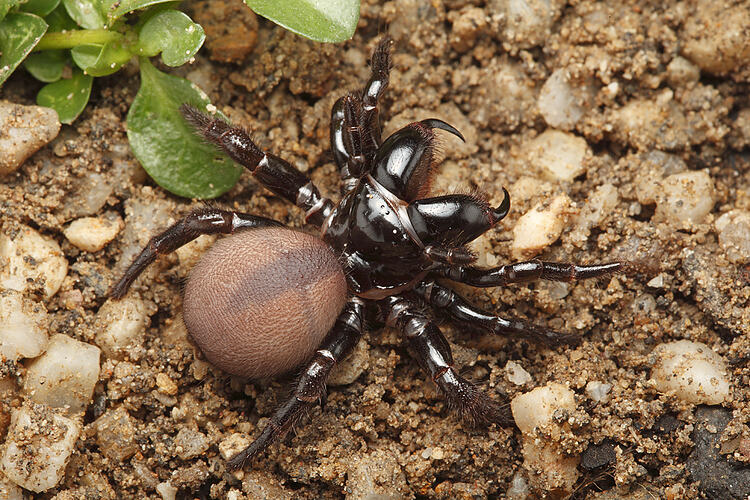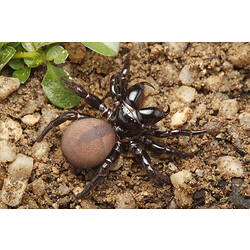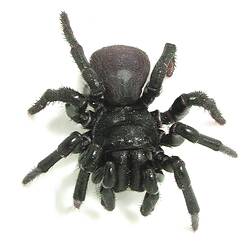General Description
Cephalothorax and legs shiny black. Abdomen rounded, dark grey to black (female) or paler with pale blue patch (male). Body up to 2 cm long (male), 3 cm long (female).
Biology
Mouse Spiders build burrows that can be up to 1 m deep and have trapdoors covering the entrance. Males are most active during daylight hours of early winter, when they wander in search of females.
Distribution
Eastern mainland Australia.
Habitat
Lives in a burrow in the ground in soft soil.
More Information
-
Animal Type
-
Animal SubType
-
Brief Id
Shiny black large cephalothorax and stout legs, small eyes spread over front of cephalothorax, trapdoor opening to burrow.
-
Colours
Brown, Black
-
Habitats
-
Where To Look
-
Diet
Insects
-
Hazards
Few serious bites have been recorded, but there is evidence to suggest that the venom is toxic. Treat these spiders with caution.
-
Endemicity
-
Conservation Statuses
CITES: Not listed, FFG Threatened List: Not listed, EPBC Act 1999: Not listed, IUCN Red List: Not listed
-
Web
Hunter
-
Taxon Name
-
Scientific Author
Rainbow, 1914
-
Common Name
Mouse Spider
-
Kingdom
-
Phylum
-
Subphylum
-
Class
-
Order
-
Infraorder
-
Family
-
Genus
-
Species Name
bradleyi



